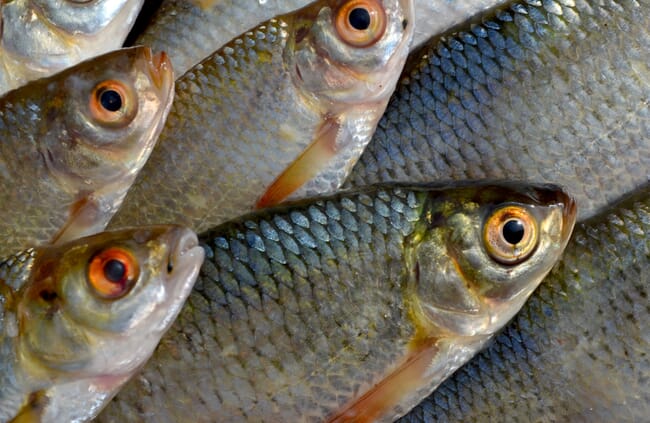
By 2030, China is likely to need an additional 6-18 million tonnes of seafood – an increase of 9-27 percent – to satisfy projected domestic consumption, according to a perspective paper published in One Earth, led by researchers from the Stockholm Resilience Centre.
The paper notes that China is currently the leading aquaculture producer in the world, accounting for 58 percent of global production in 2018. Approximately 90 percent of freshwater volumes are accounted by finfish, dominated by carp and tilapia, representing about 64 percent and 11 percent of global freshwater finfish, respectively. Carp are produced mainly for domestic consumption, whereas tilapia are primarily exported as a low-cost alternative to other whitefish in many countries.
Changing tastes
However, according to the report, “consumer notions of high-quality and safe seafood generally include wild (as opposed to farmed), marine (as opposed to freshwater), and imported (as opposed to domestically produced) seafood, particularly from countries considered to have ‘clean’ waters, such as Australia, Norway, and North America.”
“While domestic production of carp and molluscs might be a plausible way of filling a growing seafood demand in China, a key challenge remains: namely how to shift observed consumer trends away from marine, carnivorous, and imported species in a context of a rapidly urbanizing and wealthier population. Current trends indicate increasing Chinese demand for marine and higher trophic level species that will require larger volumes of fish-based feed, unless suitable alternatives are developed. Better utilization of domestic or foreign processing waste could initially fill such a feed gap but the degree to which it can satisfy the total projected feed demand remains uncertain. Aligning production and consumption in a productionist-focused trajectory would thus entail either solving the feed equation or drastically curtailing Chinese consumer choices,” they add.
Production constraints
This decline in demand for seafood produced through aquaculture domestically is mirrored by a number of production constraints highlighted in the report.
“Mussels and seaweeds already play a significant role in China’s aquaculture portfolio. Their expansion is not limited by feed development, but instead by competition for space with other industries, and is highly affected by degraded water quality. Current trends already indicate increasingly degraded coastal water quality, but the stated ambition to strengthen pollution regulation could change this trajectory. Suitable space and access to freshwater and healthy environments are thus two key factors that could limit expansion of aquaculture on land and along coasts. Offshore areas may offer alternative routes for expansion of innovative culture systems but, even though largescale systems have recently been installed, there are large uncertainties related to future development potential, including durability of the technology, cost-effectiveness, access to feed resources, and in some areas competition for space within the Exclusive Economic Zone (EEZ),” the authors argue.
Moreover, they note that growth rates of overall freshwater aquaculture and carp production have actually declined in the last decade, from 36 percent to 21 percent, and from 32 percent to 21 percent, respectively, and this production has been blamed for the increasingly acute pollution of inland and coastal waters indicating limits for future expansion. The 13th Five Year Plan (FYP) notes an obligatory target of a 120,000-hectare reduction of coastal mariculture area by 2020, and the documented severe coastal pollution (partly as a result of existing mariculture) signals limited possibilities for significant expansion in nearshore production.
“Offshore mariculture is therefore the most promising option, but current feed costs and limited testing of technologies in offshore locations makes predictions regarding this production mode difficult at present,” the authors argue.
These are some of the reasons that the growing gap in the seafood market is unlikely to be met by domestic aquaculture production alone, and the authors believe China will need to explore other options – including increasing seafood imports, expanding its distant water fishing industry and investing in aquaculture ventures abroad.
From trade hub to end receiver
The paper argues that China can move from today’s situation of being a hub where seafood passes through on its way to other markets, to being the end destination. Increasing income, urbanisation and changes in lifestyles have contributed to a bigger Chinese appetite for products like salmon and whitefish.
Reports suggest that China is already increasingly competing with other large consumers such as the US and EU. Imports from other Asian countries would also likely increase.
Catching more
While current production targets suggest a decline in distant water fishing, this mode of production may once again become an important source of seafood. An increased presence on the world oceans would align with Chinese ambitions of increasing sea power, but may also risk damage their efforts to appear more responsible as a global actor worthy of international leadership.
Investing in overseas production
China’s Belt and Road Initiative can facilitate large-scale investments by Chinese companies elsewhere in the world, including exploiting wild stocks in other countries’ exclusive economic zones. China has also invested heavily in aquaculture development abroad.
However, according to the paper, “the risk is that wild stocks in other EEZs may be poorly managed, particularly in developing countries. The same goes for aquaculture; negative environmental impacts associated with intense aquaculture production in China may be replicated in Chinese ventures in countries with weak governance”.
The authors note that several other countries are in a similar situation to China. However, given its size, China’s actions and choice are of global importance.
“Forecasting is notoriously difficult, but we hope our analysis can spur further debate about China and other nations’ future seafood needs, which bring in not just economic but also environmental, cultural and political perspectives,” says lead author Beatrice Crona.
The full paper can be accessed via https://www.cell.com/one-earth/fulltext/S2590-3322(20)30302-X




